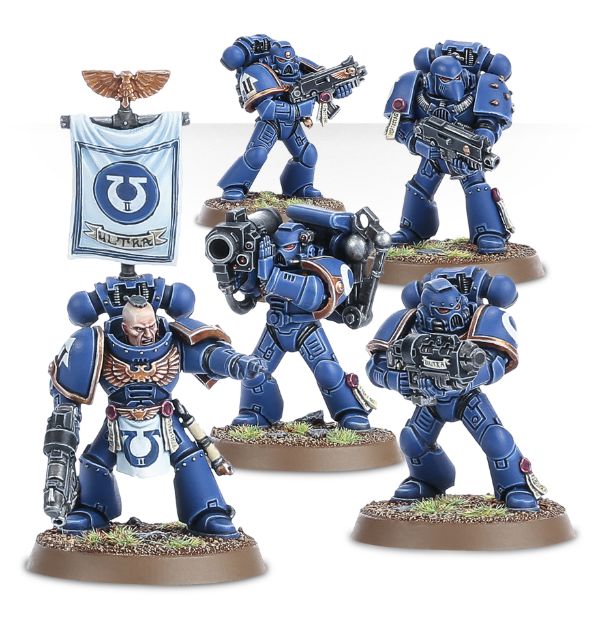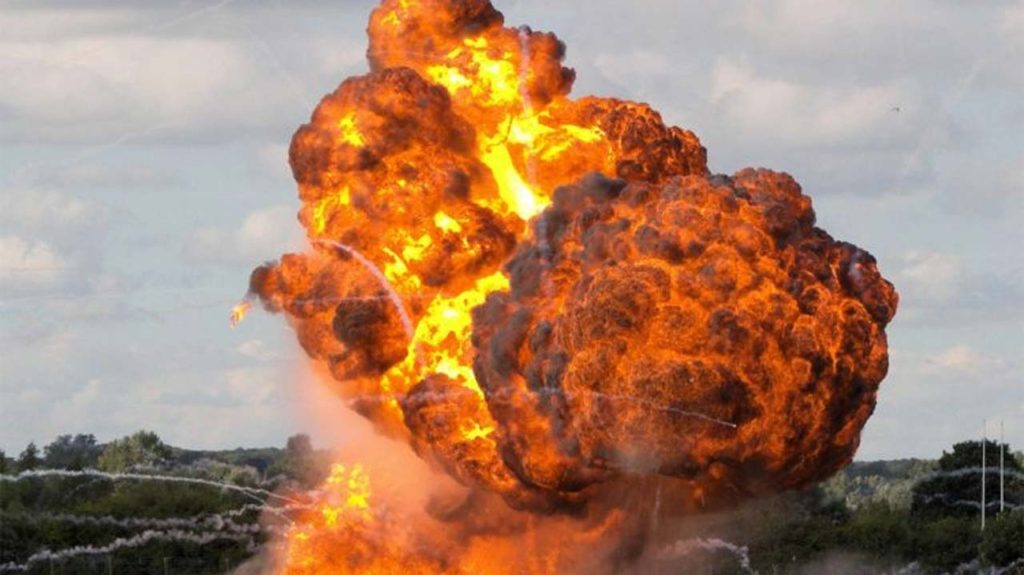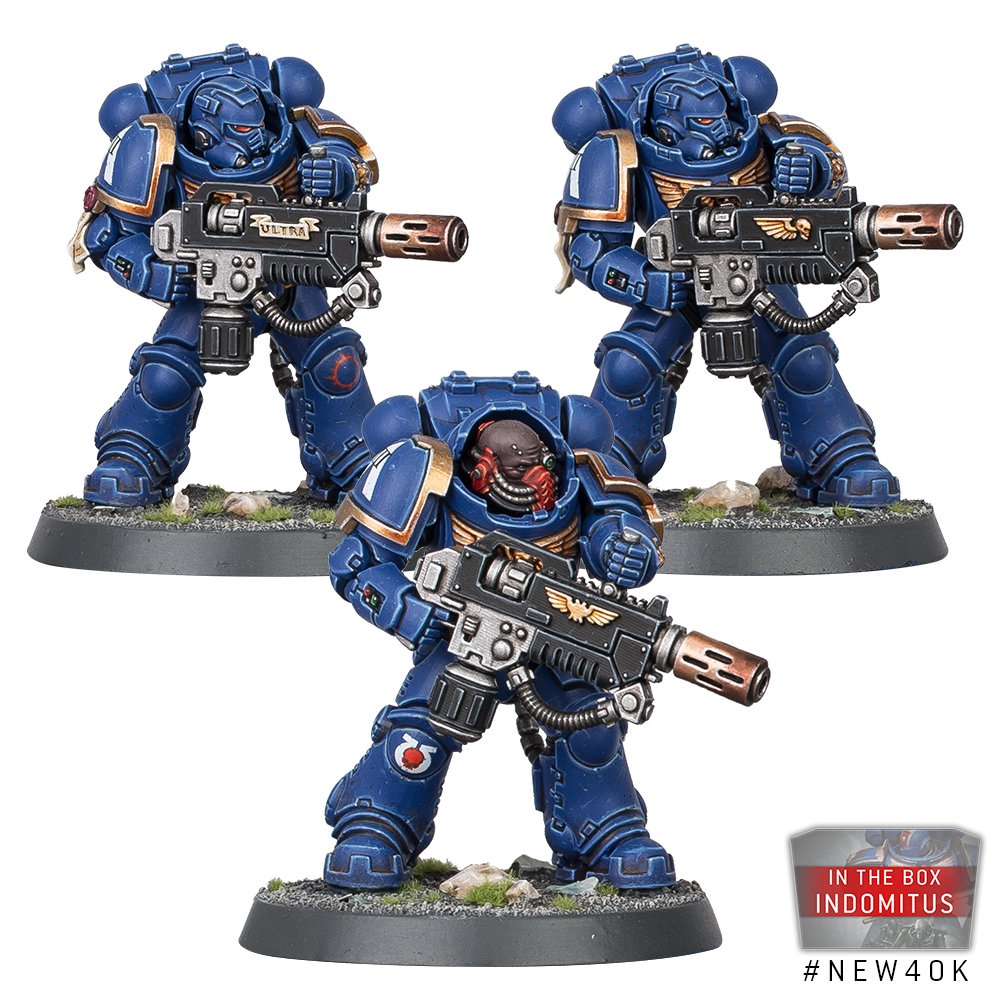You may have seen some talk of MSU (multiple small units) being powerful in 9th edition. What’s that about and how do we know it’ll be a thing? Click to read on, or check out the Tactics Corner for more reviews and strategies.

Not an Affiliate of Missouri State University
MSU is a term that has come up a lot in various editions, both current and past, and for good reason- it has a lot of advantages and can maximize efficiencies in a variety of useful ways. Since competitive players do, in fact, like efficiency and maximizing things it’s a strategy that we’ve seen plenty of before now, and even in 8th edition (which has typically been about large horde units) we’ve seen it make its presence known now and again. But why?
Well, the basic reasons are fairly simple. MSU aims to get the maximum benefit out of each unit, and it can do that in a variety of ways. For example, many units have a “maximum of one per” upgrade that they can take; this might be a sergeant with increased stats or a weapon upgrade, but regardless of what it may be, by maximizing the number of units you maximize the number of these upgrades you can take. If you have twenty Chaos Space Marines, one unit of 20 get one sergeant and one Meltagun (discounting the heavy weapon), but four units of five get four sergeants and four Meltaguns.
Individual units also cover more table space, to block off reserves more effectively- twenty models strung out in a line can obviously hold a lot of ground, but four units of five models can spread out even further (as each of the groups of five can ignore coherency with the others) and block off significantly more space.
Even more importantly, MSU can hold objectives extremely effectively, being able to spread out and claim multiple spots on the table for a primary mission as well as achieve Recon or similar secondaries. As they are also better able to hide behind terrain pieces, they can often be more resilient to boot, helping to compensate for their lower model count.
Of course, it’s not all sunshine- MSU has many disadvantages as well, including issues with morale, more difficulty benefiting from auras, the Rule of Three, etc. However, we’re not here to talk about that- we want to talk about what has changed in the new edition and why we’ll probably see a push towards more of it in favor of big blobs of units

Keep It Together
The biggest change for blobs is most certainly coherency- since models now require two friends within 2″ (and you must remove models until everyone is in coherency during the morale phase), the long, spread-out tendrils of 8th edition simply won’t be viable anymore. There are ways to bypass this somewhat- for example, by alternating chains of one model, two models, one model, two models in an interweaving “diamond” pattern, but even this significantly limits how far you can spread compared to days of old and will make casualty pulling more tricky.
More importantly, though, large units can no longer rely on wrapping up a target to keep themselves safe- which previously was a very good way to do so. Since any single unit can escape from a wrap (albeit at the cost of 2CP and its turn), units are going to have to focus more on their own survivability than simply on performing shenanigans to be unassailable. This is especially true due to the changes in how multi-assaults work, since you have to get into all your targets successfully now, making charging a whole gunline less attractive than ever.
But it’s not just defensively that MSU gains an advantage in charges- with overwatch being a stratagem now, and thus not automatic and limited to once per phase, MSU units can launch assaults much more freely than before. Previously, if you had five units of Scouts, charging into a Repulsor was a very risky proposition- chances were, it was just going to mow down each of those units as you declared the assault, gaining you nothing for your troubles except a bunch of dead Scouts. With the new rules, it can at best kill off one unit of Scouts before the others dogpile it, preventing the enemy from shooting anything else. There are still some issues with combat activation (as your opponent will have a chance to interrupt you), potentially causing a problem if you are charging into a Knight or similar unit, but this certainly won’t be the case all of the time.

Action Move-y
Another huge benefit for MSU is the introduction of “actions” to the game. Actions are essentially what they sound like- they are something that your unit can do in place of its normal turn, by the looks of it replacing your unit’s psychic, shooting, and/or assaults to instead make progress on a game objective and score points. Some actions can only be taken by particular kinds of units (e.g. psykers or infantry), but the key thing is that the whole unit has to give up part or all of its turn to take an action.
30 Ork Boyz can perform one action, and 10 Gretchin can also perform one action. Like many of the things we talked about earlier it is on a per-unit basis- and like those squad upgrades, anything that occurs on a per-unit basis will encourage MSU play styles over others and this will be especially true for actions because they are going to be critical to gaining victory points and thus winning the game. As we’ve seen many times in 8th, armies that can take an early lead in victory points can often leverage that into a win, even if they end up doing poorly in the later phases of the game- just witness the many varieties of Imperial Guard that have done well throughout the edition by controlling large sections of the board.

Having a Blast
The last big factor, and probably the one that is most obvious, is the existence of blast weapons. Many of the various weapons that previously used the Large Blast template marker in 7th edition translated over to having d6 shots (or some multiple thereof) in 8th, a factor that a lot of players found unsatisfying when the gun got a measly single shot against a horde of Orks. (I won’t go into the actual statistics of this here, as that’s a subject for a whole different article, but I will say that I think people are forgetting just how often a blast marker would scatter 8″ in a direction and hit absolutely nothing.)
GW has taken notice of this, however, and introduced the new iteration of the Blast rule- weapons with this rule will have a minimum number of shots against larger units, regardless of the roll of the dice- for example, against a unit size of 6-10 they will fire no less than three shots, and against a size of 11+ they will always fire the maximum six shots. Since a lot of units in the game have a base squad size of five, this is a major impetus to avoid going above the minimum there- made all the more attractive by the other factors we talked about above.
The End
Now, does all of this mean that we won’t see any hordes in 9th edition? Absolutely not. In fact, it’s very possible that the meta will pendulum between hordes and MSU as one or the other gains popularity and people build armies to defeat it (which almost by necessity means weakening themselves against the other), but overall I feel like things are going to lean noticeably towards MSU, at least in the beginning before we start getting codices. MSU units certainly do have issues- for example, they suffer worse from morale than hordes do in the new edition, and it’s very easy for the enemy to deny you character protection with them by simply causing a few casualties. However, even these factors I don’t think will be enough to completely overturn the advantages of the strategy, and we can expect to see armies with large numbers of units in them appearing on many tables in the near future.
As always, remember that you can get your wargaming supplies at great discounts every day from the Frontline Gaming store, whether you’re looking to start a new army or expand an existing one.



My CWE lists are mostly unaffected by these changes. Staying in coherency with 9 Spears while activating the HoAR bonus is one scenario I imagine being finicky but that’s it. Well written as usual AP!
Yeah Craftworlds (and, really, Eldar in general) already tended to play MSU approaches because that’s what their codices lean towards anyways; this only solidifies the decision.
The one knock I have found against MSU (morale will never affect MSU for SM) is the new Look Out Sir rule.
You need to have at least 3 models to have your character be untargetable. So just need to pop 3 in the squad of 5 and now your character in open to all the guns. Or as the new units are showing with a max of 3 per unit you just need to take out 1 and the buffing character is exposed.
There a true reason for running a larger squad. 🙂
Yeah. There definitely are some potential disadvantages- Look Out Sir being a big one for sure. But it can be mitigated if you, say, have transports to carry all of those small units around in, or if you aren’t relying as heavily on aggressive characters, or whatever else.